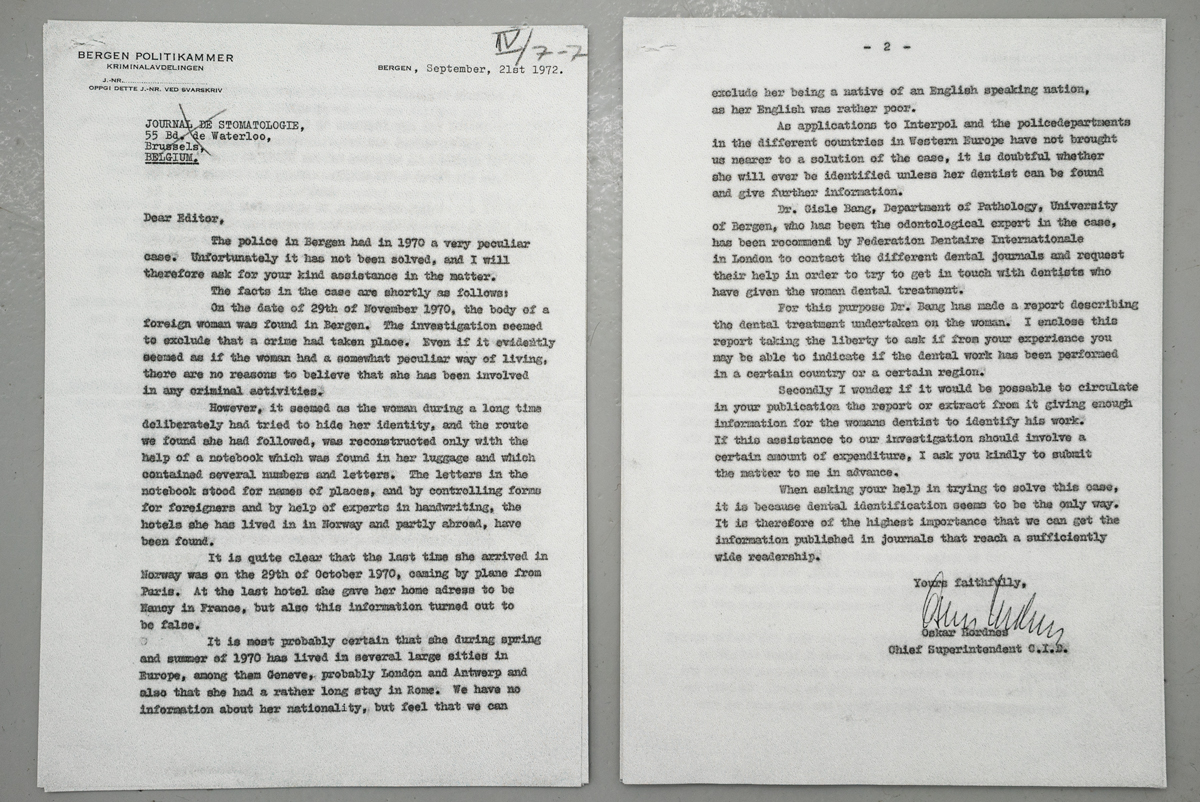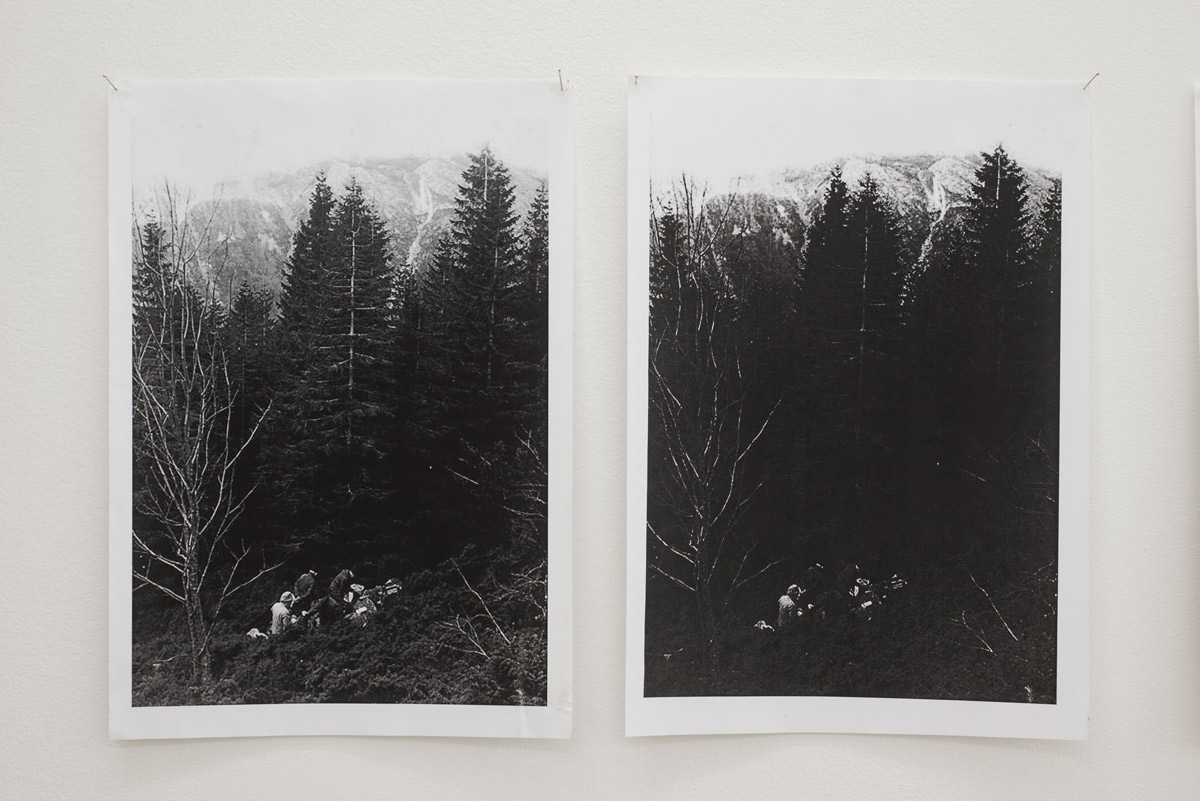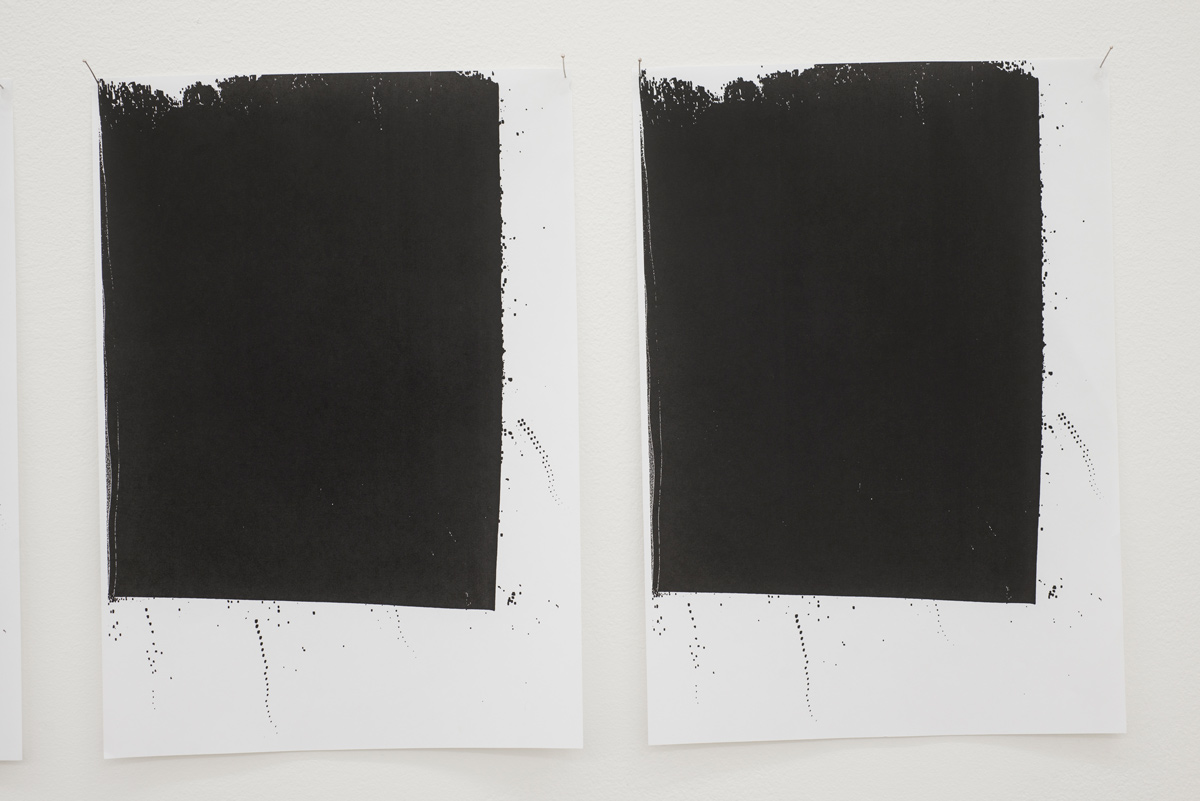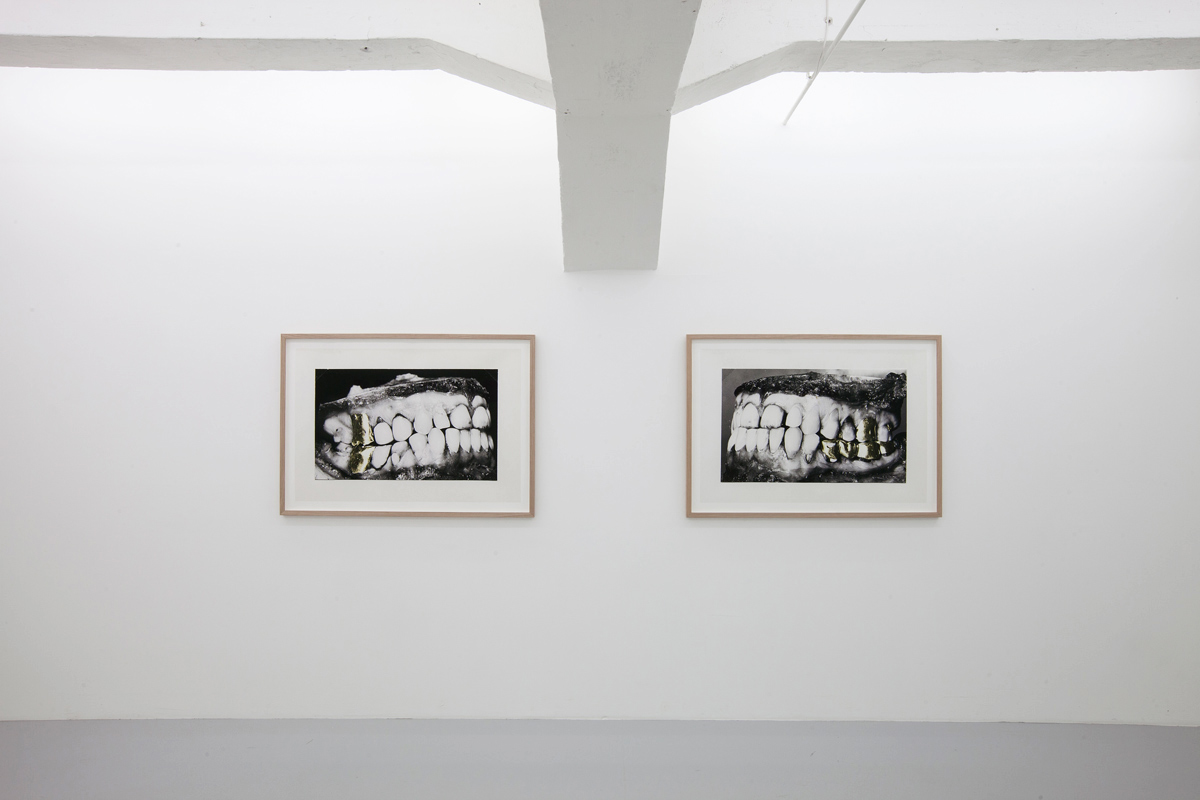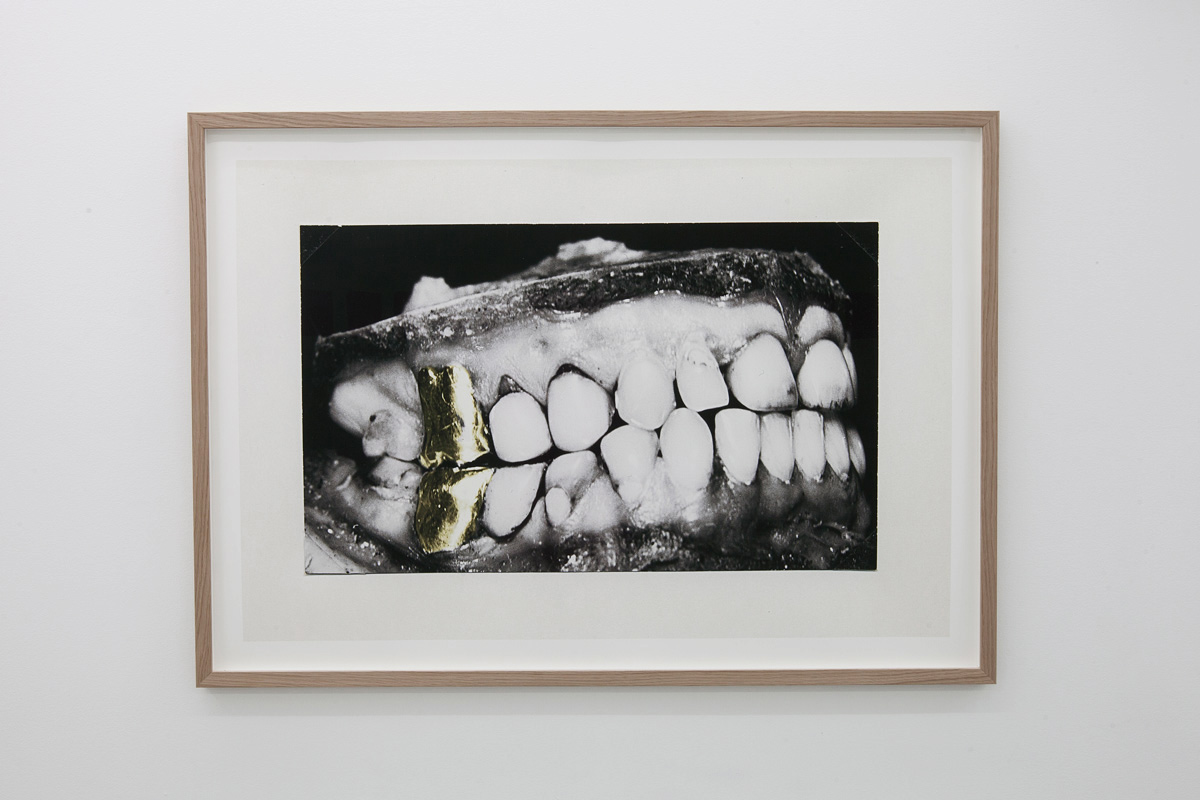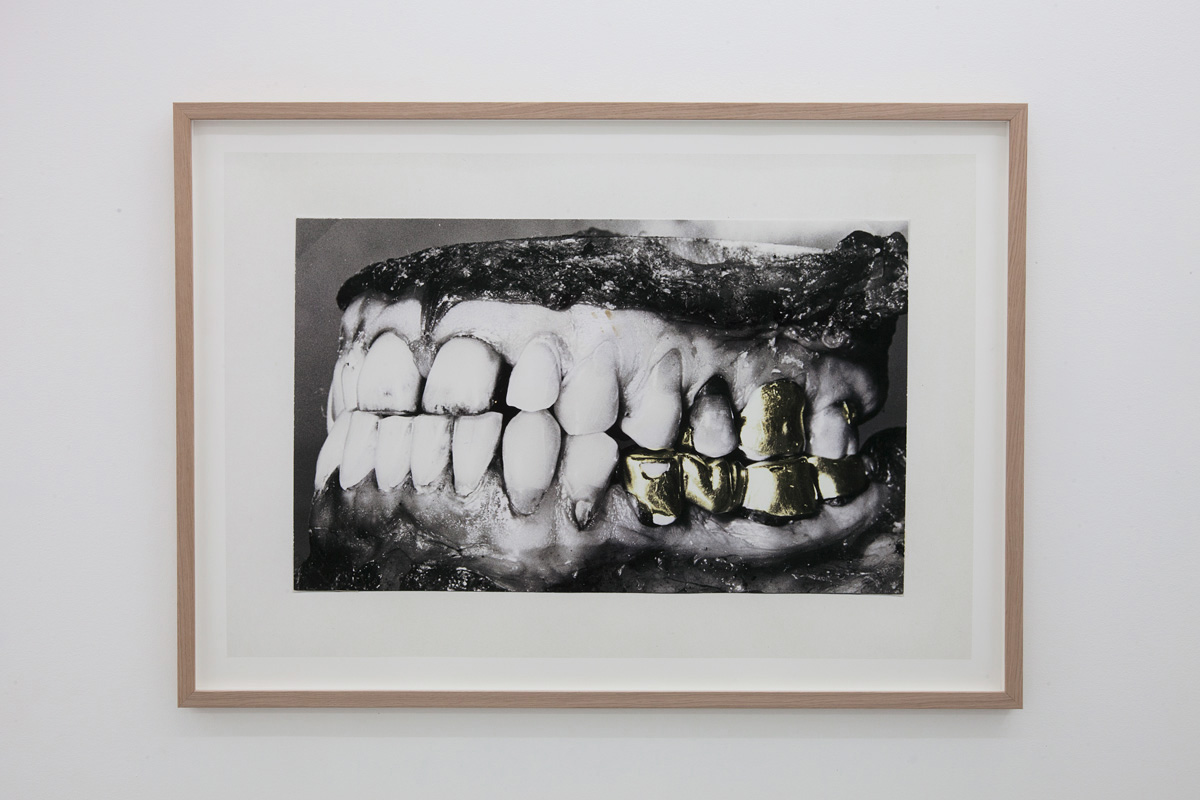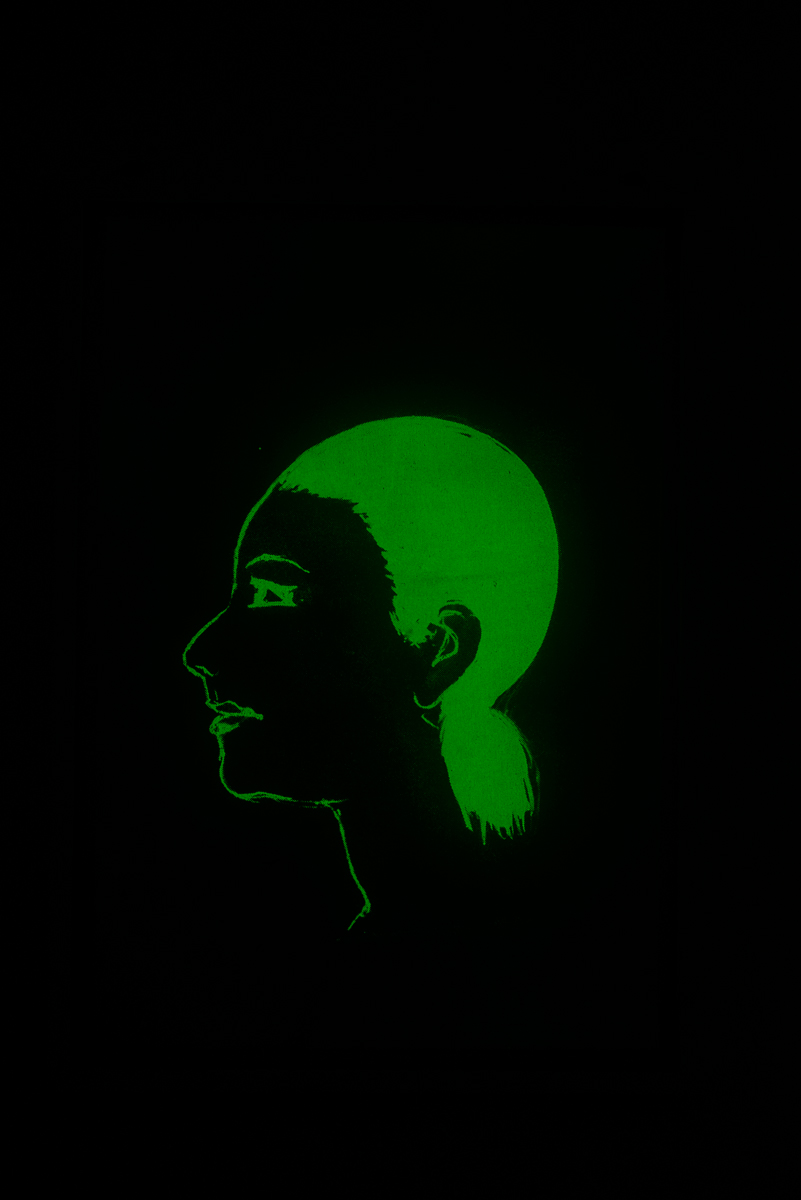Installation view: Tag Team Studio, Bergen, 2017
Of her face
I have
only
a feeling
it appeared
heavy.
Nel's interest in Bergen’s unsolved case of the Isdal Woman partly revolves around her preoccupation with the distinction between fact and fiction, between adventure and legend, and with the mysterious. She is also drawn to assume the role of investigator in her artistic work. Perhaps this has to do with her own background. Nel's father was shot and killed in South Africa in a murder case that was never solved. Her personal involvement in the case occasionally appears in her works as tender, even sentimental gestures. In contrast to this, the exhibition has a clean, almost polished expression. Perhaps some of the sensationalistic aspects of the Isdal Woman case have influenced Nel's style, which is dominated by neon, pastel colors, and gold.
Nel interacts with the visual traces of the Isdal Woman in various ways: the phantom images, the press photos, and the photographs from the police archive. For example, Nel has scanned and blown up the black-and-white documentation of the Isdal Woman's teeth into large, beautiful, yet grotesque photo prints. The images are sloppily colored in Photoshop: through an apparently impulsive gesture, she has restored the gold color to the crowns on the woman's molars. These, and several of Nel's works, can be seen as attempts to bring the Isdal Woman out of the archive and into reality. Some of the works can also be read as a contemplation on how stories are stored in objects. The stories about the Isdal Woman are largely extracted from material that changes and deteriorates over time. Many of the photographs, from police archives and from the press, are attempts to preserve this material. But through Nel's work, we understand that photographs also erode, as they gradually detach from their origin through reproduction.
Nels interesse for saken om Isdalskvinnen handler til dels om at hun er opptatt av skillet mellom fakta og fiksjon, av eventyret og sagnet, og av det mystiske. Hun dras dessuten mot å ta rollen som etterforsker, i det kunstneriske virket sitt. Kanskje har dette med hennes egen bakgrunn å gjøre. Nels far ble skutt og drept i Sør-Afrika, i en drapssak som aldri ble oppklart. Det personlige engasjementet hun har i saken kommer glimtvis til syne i arbeidene hennes, som ømme, til og med sentimentale gester. I kontrast til dette har utstillingen et rent, nesten polert uttrykk. Kanskje har noe av det sensasjonalistiske ved Isdalskvinne-saken smittet over i formspråket til Nel, som domineres av neon, pastellfarger og gull.
Nel interagerer på ulike måter med de visuelle sporene etter Isdalskvinnen: fantombildene, pressebildene, og fotografiene fra politiets arkiv. Svarthvitt-dokumentasjonen av Isdalskvinnens tenner, for eksempel, har Nel skannet og blåst opp til store, vakre men samtidig groteske fototrykk. Bildene er slurvete fargelagt i Photoshop: gjennom en tilsynelatende impulsiv gest har hun tilbakeført gullfargen i kronene på kvinnens jeksler. Disse, og flere av arbeidene til Nel kan sees som forsøk på å hente Isdalskvinnen frem fra arkivet og inn i virkeligheten. Noen av verkene kan også lese som en kontemplasjon over hvordan historier oppbevares i gjenstander. Historiene om Isdalskvinnen blir i stor grad hentet ut fra materiale som endres og brytes ned over tid. Mange av fotografiene, fra politiets arkiver og fra pressen, er forsøk på å konservere dette materialet. Men gjennom arbeidet til Nel forstår vi at også fotografier eroderer, når de gjennom reproduksjon gradvis fjernes fra sitt opphav.




